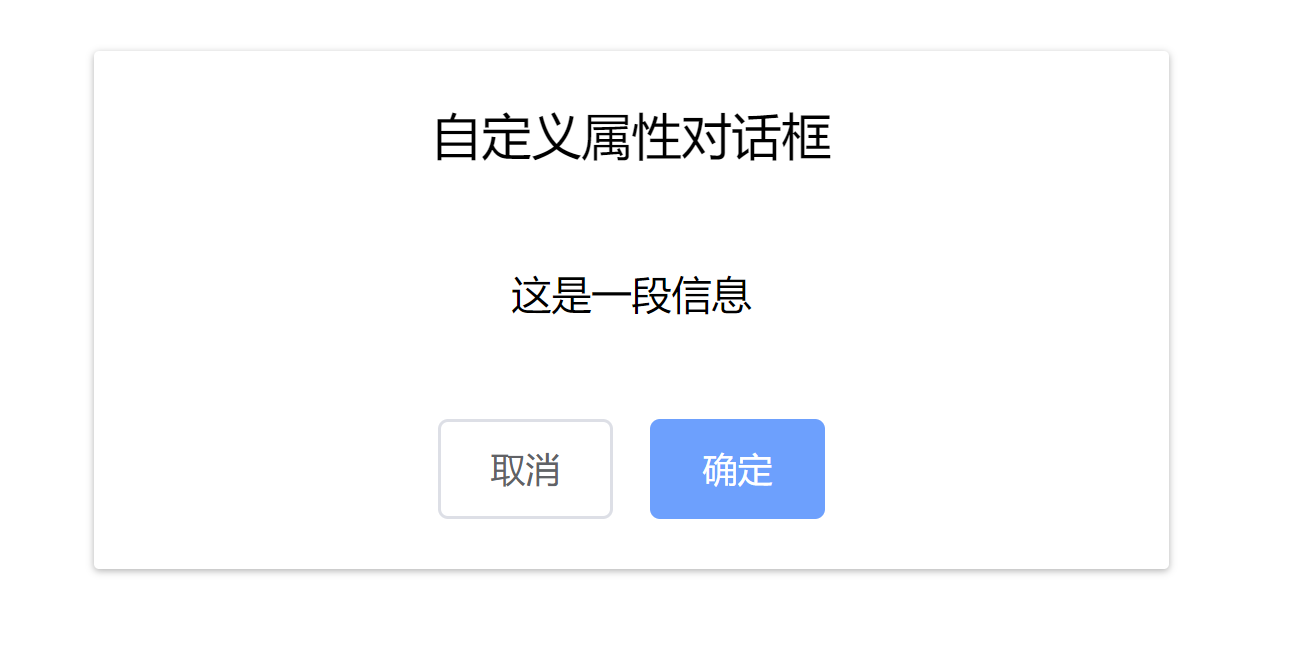前言
现在前端框架有许多的UI框架可以选择,但是样式或者功能不一定是我们项目中想要的,因此很多时候需要自己封装。此篇文件简单介绍一下利用自定义标签或者自定义扩展属性来封装UI组件,方便项目的其他地方复用,如果要封装其他例如分页功能、按钮、动画等等也是一样的,这里主要讲思路,大家完全可以举一反三。
一、自定义标签
例如elmentUI的标签都是el-开头
<el-dialog title="对话框"> <span class="dialog-body">这是一段信息</span> <span class="dialog-footer"> <el-button>取消</el-button> <el-button type="primary">确定</el-button> </span> </el-dialog>
js去读取并替换为浏览器可以识别解析的标签(这里用jq写会更方便,不过我懒得引入了):
let dialog = document.getElementsByTagName("el-dialog")[0];
dialog.outerHTML = `<div class="el-dialog">
<h3 class="dialog-header">${dialog.title}</h3>
<span class="dialog-body">${dialog.children[0].textContent}</span><span class="dialog-footer">
<button class="el-button">${dialog.children[1].children[0].textContent}</button>
<button class="el-button el-button-${dialog.children[1].children[1].attributes[0].value}">${dialog.children[1].children[1].textContent}</button>
</span></div>`;
效果图:

二、自定义扩展属性
data-开头,设置属性值或内容,然后标签替换
<div class="el-dialog" data-title="自定义属性对话框"> <span class="dialog-body">这是一段信息</span> <span class="dialog-footer"> <button class="el-button">取消</button> <button class="el-button el-button-primary">确定</button> </span> </div>
js部分 元素.dataset.属性 来读取:
let dialog2 = document.getElementsByClassName("el-dialog")[1];
let h3 = document.createElement("h3");
h3.setAttribute("class","dialog-header");
h3.innerHTML = dialog2.dataset.title;
dialog2.insertBefore(h3,dialog2.children[0]);
效果图:

样式写的比较简单,dom元素操作也很单一,大家可以换jq操作会更加方便,这里主要讲思路。